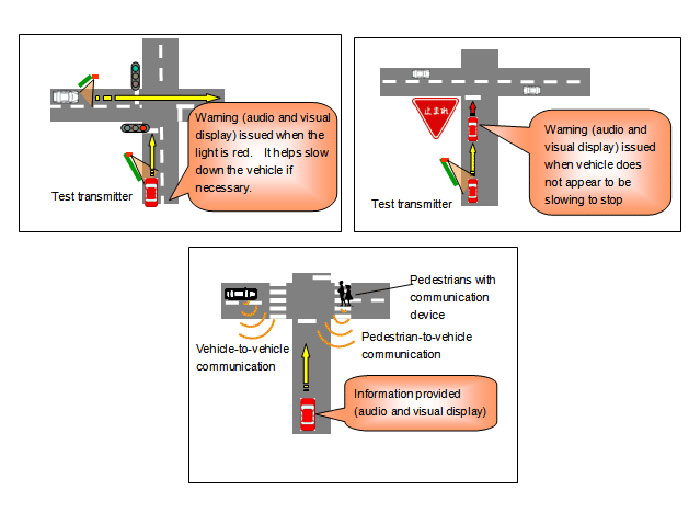Talking traffic lights and self driving cars
Toyota gets our cars talking to street furniture

It's not just phones that are interacting with their surroundings these days - the latest safety enhancement for cars is a system from Toyota that gets vehicles speaking to traffic lights, street furniture, pedestrians and even each other.
Unlike the driving simulator we saw yesterday, Toyota's Intelligent Transport Systems (ITS) technologies aim to intervene directly to make life on the roads safer, rather than by promoting better driving. As outlined in recent demonstrations, ITS relies on transmitting data about driving conditions from various sources to drivers.
Smart traffic lights
The examples given include smart traffic lights that send signals to car computers when they turn red. If the car shows no signs of slowing down, then the driver receives a warning from the dashboard. The system may even be developed to take matters into its own hands and slow the car down automatically.
Other ITS elements displayed were a stop sign system that works in a similar way, a vehicle-to-vehicle system that acts like a radar to alert drivers to the presence of nearby cars and a pedestrian-to-car system that does the same thing for people on the street.
Information overload?
Although the amount of feedback on its surroundings flowing into the car seems excessive, if the actual information delivered to drivers can be kept to a minimum some of these approaches to road safety could prove useful.
However, the last thing most drivers need is information overload - we all know how distracting an always-on car-navigation system can be, despite our best intentions.
Sign up for breaking news, reviews, opinion, top tech deals, and more.
J Mark Lytle was an International Editor for TechRadar, based out of Tokyo, who now works as a Script Editor, Consultant at NHK, the Japan Broadcasting Corporation. Writer, multi-platform journalist, all-round editorial and PR consultant with many years' experience as a professional writer, their bylines include CNN, Snap Media and IDG.